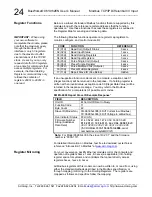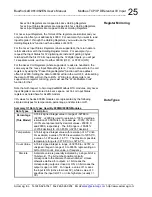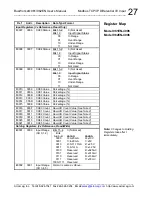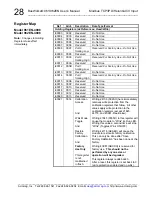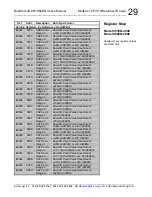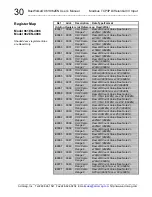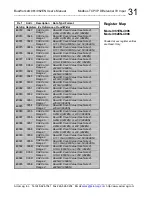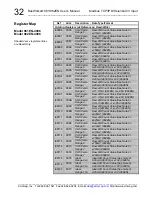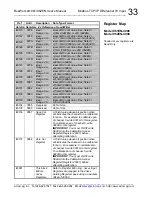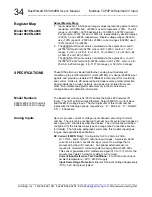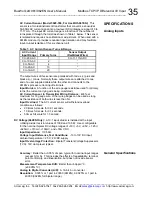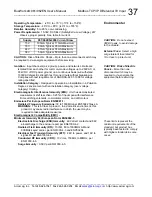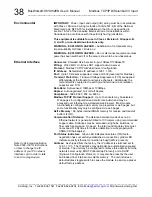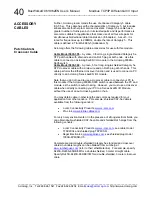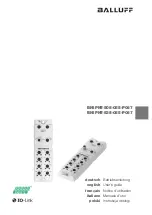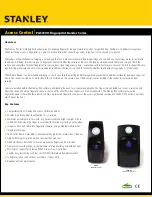
BusWorks® 961/962EN User’s Manual Modbus TCP/IP Differential I/V Input
__________________________________________________________________
_______________________________________________________________________________________
Acromag, Inc. Tel:248-624-1541 Fax:248-624-9234 Email:
sales@acromag.com
http://www.acromag.com
38
IMPORTANT:
Power, input, and output (I/O) wiring must be in accordance
with Class I, Division 2 wiring methods of Article 501-4(b) of the National
Electrical Code, NFPA 70 for installations in the US, or as specified in
section 18-1J2 of the Canadian Electrical Code for installations within
Canada and in accordance with the authority having jurisdiction.
This equipment is suitable for use in Class I, Division 2, Groups A, B,
C, and D, or non-hazardous locations only.
WARNING – EXPLOSION HAZARD –
Substitution of components may
impair suitability for Class I, Division 2.
WARNING – EXPLOSION HAZARD –
Do not disconnect equipment unless
power has been switched off or the area is known to be non-hazardous.
Connector:
Shielded RJ-45 socket, 8-pin, 10BaseT/100BaseTX.
Wiring:
Wired MDI. Unit does NOT support auto-crossover.
Protocol:
Modbus TCP/IP w/Web Browser Configuration.
IP Address:
Default static IP address is 128.1.1.100.
Port:
Up to 10 sockets supported. Uses port 502 (reserved for Modbus).
Transient Protection:
Transient Voltage Suppressors (TVS) are applied
differentially at the transmit and receive channels. Additionally, the
metal shield is coupled to the earth ground terminal via an isolation
capacitor and TVS.
Data Rate:
Auto-sensed, 10Mbps or 100Mbps.
Duplex:
Auto-negotiated, Full or Half Duplex.
Compliance:
IEEE 802.3, 802.3u, 802.3x.
Modbus TCP/IP Protocol Support:
Up to 10 sockets may be selected.
Web pages for configuration and control are built-in and may be
accessed over Ethernet via a standard web browser. Most module
functionality is configured via memory map registers or web pages, but
some functionality may only be configured via web pages.
Rx/Tx Memory:
8K bytes internal SRAM memory for receive and transmit
buffers (FIFO).
Communication Distance:
The distance between two devices on an
Ethernet network is generally limited to 100 meters using recommended
copper cable. Distances may be extended using hubs, switches, or
fiber optic transmission. However, the total round trip delay time must
not exceed 512 bit times for collision detection to work properly with
CSMA/CD (half-duplex).
Port Status Indicators:
Green LED indicates link status (ON if auto-
negotiation has successfully established a connection), yellow LED
indicates activity (ethernet connection is busy/traffic is present).
Address:
As shipped from the factory, the IP address is static and set to
128.1.1.100. The IP address may optionally be automatically acquired
at startup. The unit may be configured to retrieve this address from the
network server using BOOTP (Bootstrap Protocol), or via DHCP
(Dynamic Configuration Protocol). It may also be preset by the user
and loaded from internal non-volatile memory. The unit includes a
default address toggle switch to cause the module to assume a preset
default factory address.
Environmental
Ethernet Interface
Refer to Acromag Application
Note 8500-734 for instructions
on how to change the IP
address of your PC network
interface card in order to talk
to an Acromag module.

